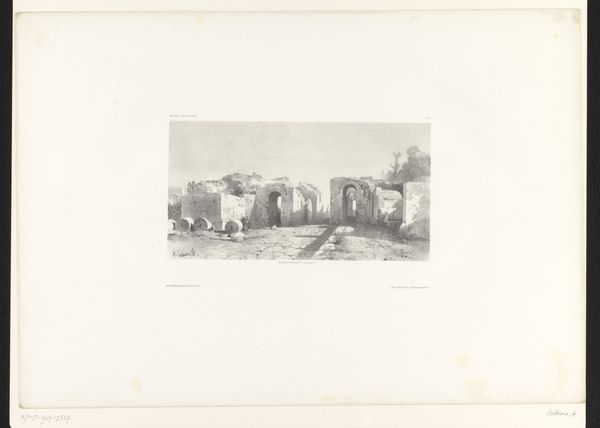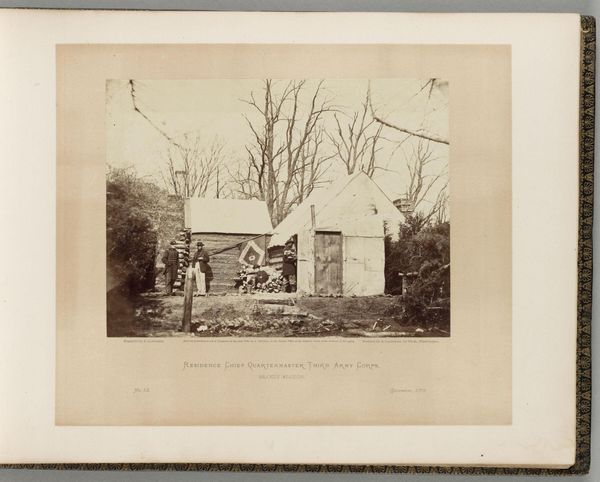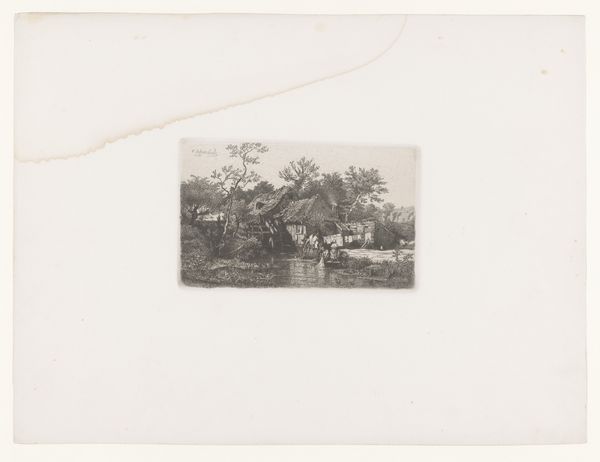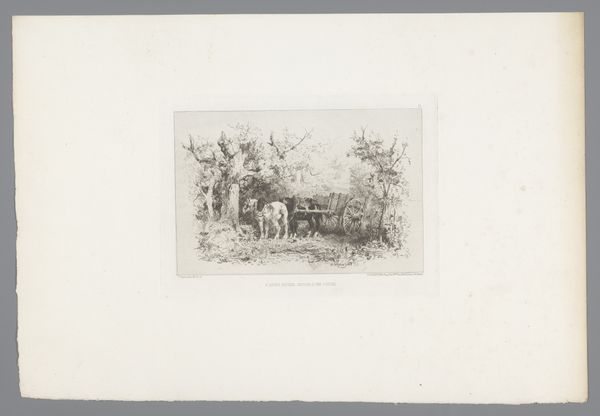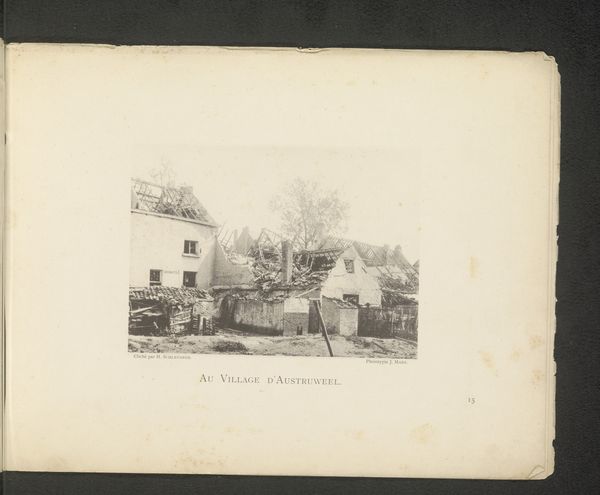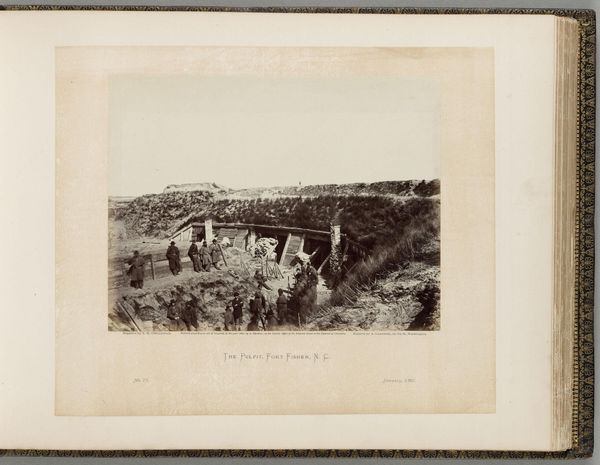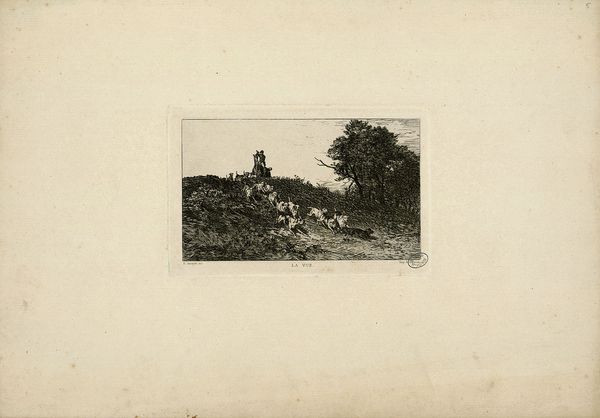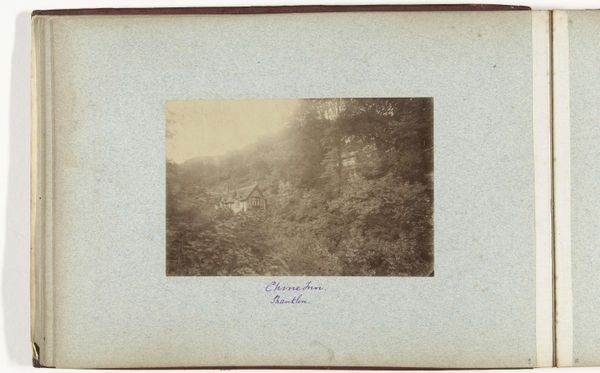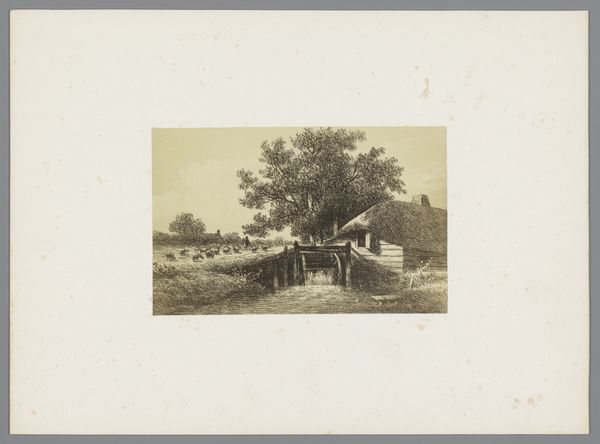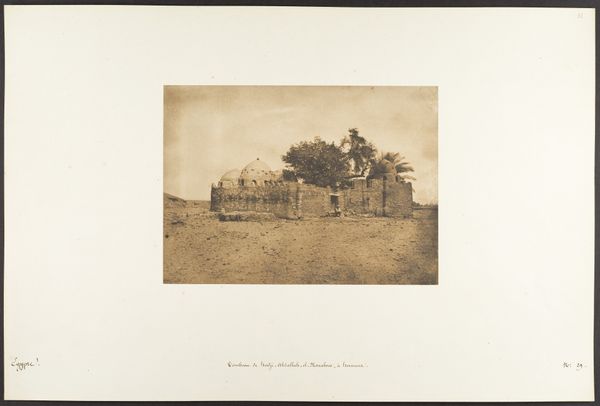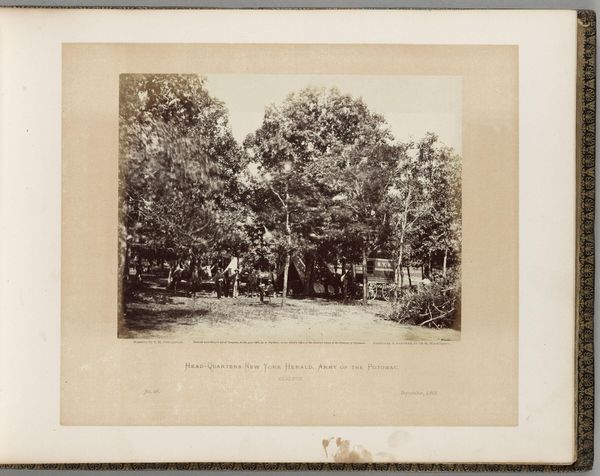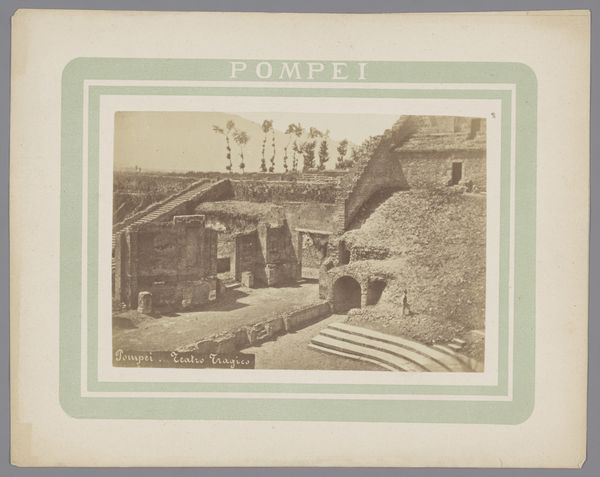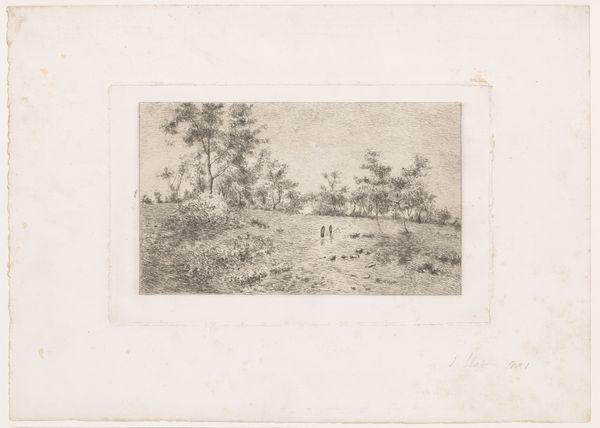
print, photography
# print
#
landscape
#
photography
Dimensions: height 113 mm, width 166 mm
Copyright: Rijks Museum: Open Domain
Curator: This intriguing print showcases the "Spoorbrug over de rivier Mutoco in Mozambique," or the railway bridge over the Mutoco River, captured around the 1880s by Manuel Romão Pereira. The photograph, sepia-toned, depicts a modest bridge structure amidst a seemingly untamed landscape. Editor: My first thought? Imposition. This bridge, this starkly geometric form, cuts right across the natural flow of the river and what looks like a lush, almost overgrown landscape. It feels like a very clear visual statement about power, doesn't it? Curator: Absolutely. The railway itself represents colonial ambition. The late 19th century was a period of intense European expansion, and railways were crucial for resource extraction and consolidating power. Editor: Right. So this isn't just a picture of a bridge; it's an image deeply implicated in colonial projects. It’s easy to romanticize landscapes, but this challenges that, laying bare the mechanics of empire. You can almost hear the echoes of disrupted communities and exploited resources. Curator: Precisely. The "Caminho de ferro de Lourenço Marques"—the Lourenço Marques railway line—was vital for transporting goods to and from the port, fundamentally reshaping Mozambique’s economy and social structures. Pereira’s photograph, then, functions almost as propaganda, documenting this "progress." Editor: And look at the bridge itself—solid, unwavering—contrasted with the organic forms surrounding it. The lack of human presence only intensifies the sense of alienation. It’s as if the landscape is quietly resisting this foreign imposition. Curator: Interesting observation! Consider the vantage point: not an epic wide shot celebrating the grand achievement, but an intimate perspective focusing on the immediate intersection of nature and infrastructure. It’s subtle but effective in illustrating this pivotal moment of transformation. Editor: For me, this print urges a reckoning with the legacies of colonialism, prompting questions about environmental degradation, forced labor, and the enduring impact of infrastructure on marginalized communities. Curator: I agree. Pereira's work offers us not just a picturesque landscape but an opportunity to reflect critically on how these systems have fundamentally shaped Mozambique’s social, economic, and cultural landscape.
Comments
No comments
Be the first to comment and join the conversation on the ultimate creative platform.


